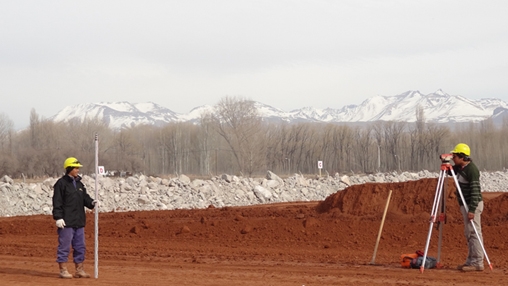A few minutes after the sun begins to warm the snowy peaks of the Andes, in the city of Malargüe in Mendoza, an atypical workday begins, not only for the community but also for the entire country. It just happens that the first environmental restoration of uranium mining in Argentina is being carried out there.
"The remediation uses natural materials such as clay, sand, gravel and rock. Thanks to this mix, it’s possible to encase the uranium tailings, which were left accumulating after the Malargüe factory building closed in 1986. This factory processed uranium to produce elements for nuclear reactors or power stations," explains Juan Guillermo Diaz, chief engineer for the Argentina Mining Environmental Restoration Project (PRAMU) in Malargüe who is in charge of the Atomic Energy National Commission (CNEA).
In all, 710,000 metric tons of residual uranium soil, containing low levels of radioactivity, will be encased within an area of 12 hectares, located in an area of 42 hectares where a theme park will be built.
"About 15 percent of the work has already been done and we estimate that it will all be completed by 2015," says Diaz. Once finished, the procedure will prevent the release of radioactive material into the soil, air and water, minimizing contact with the environment and the community, which is home to 28,000 people.
"The project seeks to reduce potential health risks to the population resulting from long-term contact with the waste products, especially considering that the site is on the outskirts of the city," says Catalina Marulanda, World Bank Project Manager. Furthermore, it strengthens the CNEA when managing the closure of these mines according to international practices.
"Across the country, there are another seven sites with residual radioactive waste, and so, within the project, we will also study different remediation options together with the CNEA and in accordance with good environmental and social practices," says Marcelo Acerbi, Environmental Specialist Bank.

